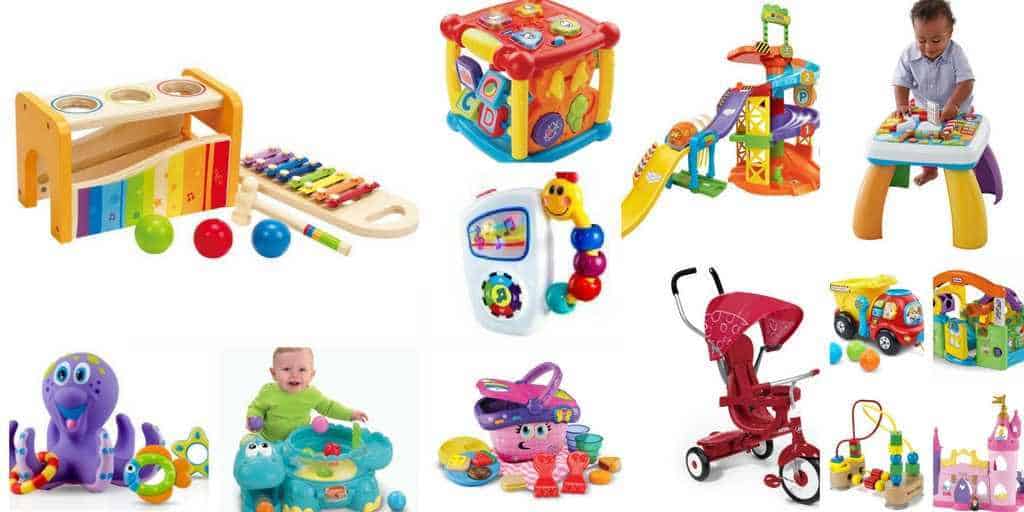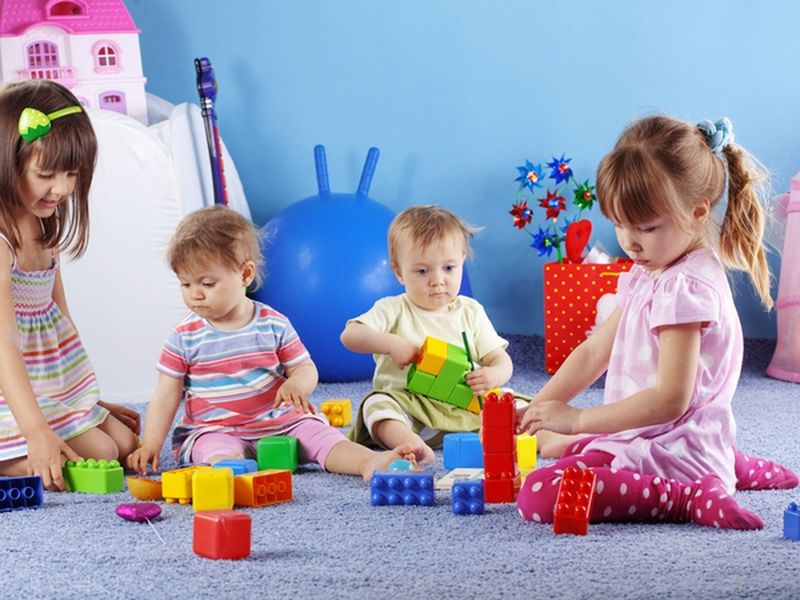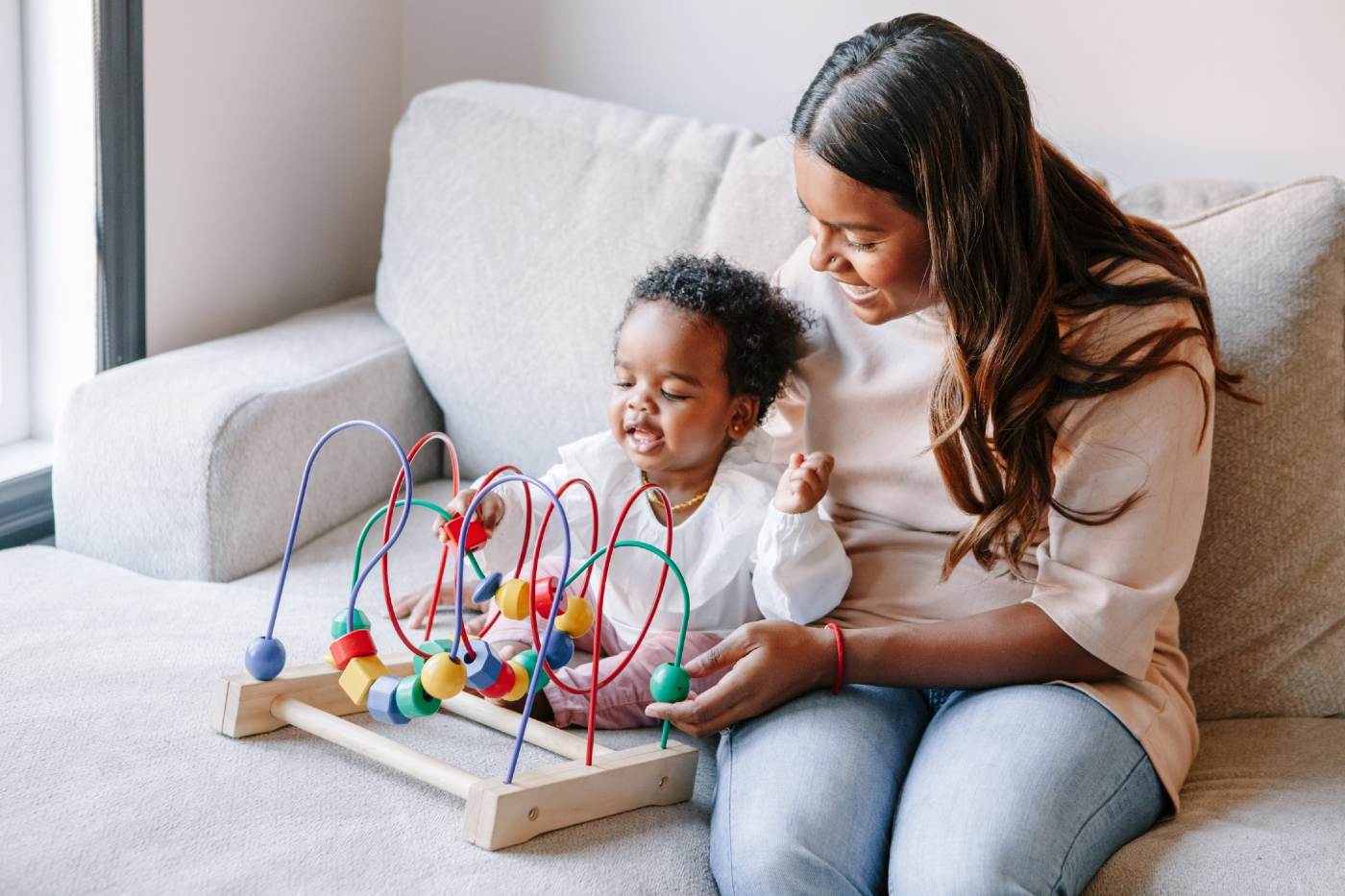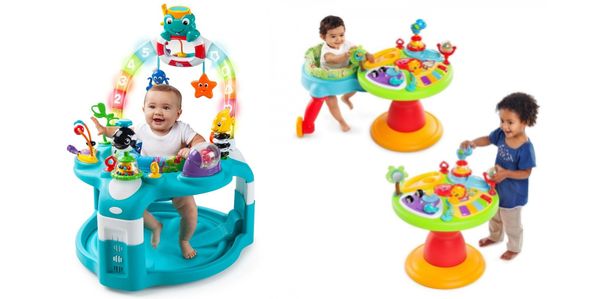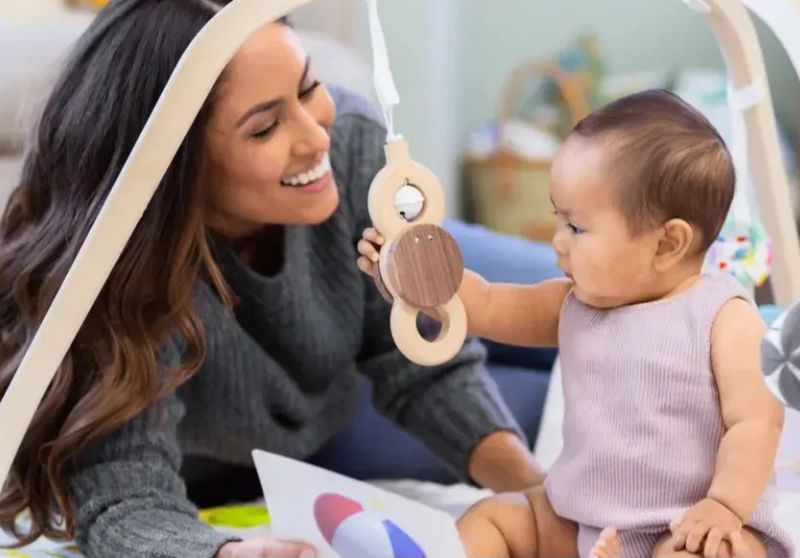
Exploring the Uses of Baby Activity Toys in Infant Care
As a parent in the UK, you’re constantly seeking ways to support your little one’s development while making your parenting journey more enjoyable and manageable. Baby activity toys are versatile tools that can significantly enhance your infant care routine. In this comprehensive guide, we’ll explore the myriad uses of baby activity toys and how they can contribute to your baby’s growth and well-being, all while making your life as a parent a bit easier.
Understanding the Versatility of Baby Activity Toys
Baby activity toys are far more than just playthings; they’re valuable tools for development, engagement, and even parental sanity. Let’s delve into the various ways you can use these toys to support your infant’s growth:
1. Promoting Sensory Exploration
One of the primary uses of baby activity toys is to stimulate your little one’s senses. Sensory exploration is crucial for brain development in infants. Here’s how you can use these toys for sensory development:
Tactile Stimulation
- Use toys with different textures (smooth, rough, bumpy) to encourage touch exploration. This helps your baby develop their sense of touch and learn about different surfaces.
- Introduce soft fabric books or crinkly toys to engage your baby’s sense of touch. The varying textures provide a rich sensory experience.
Example: A soft book with different textured pages – perhaps a furry animal on one page, a smooth surface on another, and a crinkly page – can provide a wealth of tactile experiences.
Visual Development
- Opt for high-contrast toys or black-and-white patterns for newborns. In the first few months, babies can see high-contrast colours best, so these toys are perfect for visual stimulation.
- As your baby grows, introduce colourful toys to stimulate visual tracking. This helps develop their ability to follow moving objects with their eyes.
Example: A mobile with high-contrast patterns for a newborn can evolve into a colourful, dangling toy for an older baby to bat at and track.
Auditory Engagement
- Rattles and musical toys can help develop your baby’s auditory skills. These toys introduce different sounds and help your baby learn to locate sound sources.
- Use toys that make different sounds when squeezed or shaken. This variety helps your baby distinguish between different types of sounds.
Example: A set of baby maracas or a toy xylophone can introduce your baby to different pitches and volumes.
2. Enhancing Motor Skills Development
Baby activity toys play a crucial role in developing both fine and gross motor skills. These skills are essential for your baby’s physical development and future abilities:
Fine Motor Skills
- Offer toys with buttons, switches, or small parts to manipulate (always under supervision). These toys help develop the small muscles in your baby’s hands and improve coordination.
- Use stacking toys or shape sorters to encourage finger dexterity. These activities require precision and help refine your baby’s hand movements.
Example: A simple shape sorter can evolve from a toy your baby simply holds and mouths to one they actively try to fit shapes into as their skills develop.
Gross Motor Skills
- Activity gyms encourage reaching and grasping. These large play areas motivate your baby to move their entire body to reach for dangling toys.
- Push-and-pull toys support crawling and early walking stages. These toys give your baby a reason to move and explore their environment.
Example: An activity gym can be used from birth for visual stimulation, then for tummy time, and later for sitting and reaching practice.
3. Supporting Cognitive Development
The uses of baby activity toys extend to cognitive growth, helping your baby learn about the world around them:
Problem-Solving
- Introduce simple puzzles or cause-and-effect toys. These toys help your baby understand that their actions can have results.
- Use nesting cups or blocks to encourage spatial awareness. These toys help your baby understand concepts like ‘bigger’ and ‘smaller’.
Example: A simple toy that lights up or plays music when a button is pressed teaches your baby about cause and effect.
Memory and Recognition
- Play peek-a-boo with soft toys to build object permanence. This game helps your baby understand that things still exist even when they can’t see them.
- Use picture books to help with image recognition. This activity lays the foundation for language development and early literacy skills.
Example: A soft toy used in peek-a-boo games can become a comfort object, showing how one toy can serve multiple purposes.
4. Encouraging Language Development
Baby activity toys can be excellent tools for promoting early language skills:
Vocabulary Building
- Name the toys and their features as you play. This exposes your baby to new words in context.
- Use sound-making toys to introduce onomatopoeias (e.g., “The cow says moo”). This helps your baby associate sounds with specific animals or objects.
Example: A toy farm set can be used to introduce animal names, sounds, and related vocabulary like ‘barn’ or ‘field’.
Interactive Play
- Engage in back-and-forth play with toys to encourage communication. This mimics the turn-taking in conversation.
- Use puppets or soft toys for storytelling. This exposes your baby to narrative structures and expressive language.
Example: A hand puppet can be used to ‘talk’ to your baby, encouraging them to babble back and engage in proto-conversations.
5. Fostering Emotional Development
Don’t underestimate the emotional benefits of baby activity toys:
Self-Soothing
- Introduce a comfort object or soft toy for emotional security. This can help your baby feel safe and calm, especially in new situations.
- Use musical toys for calming effects. Gentle melodies can help soothe an upset baby.
Example: A soft, musical night light can become part of a bedtime routine, helping your baby transition to sleep.
Building Confidence
- Celebrate your baby’s achievements with toys (e.g., successfully stacking blocks). This positive reinforcement boosts their self-esteem.
- Offer toys that provide a sense of mastery at different stages. As your baby grows, introduce toys that challenge them slightly to build confidence.
Example: A stacking ring toy can be used simply for grasping and mouthing by younger babies, then for actual stacking as they develop, providing a sense of achievement at each stage.
6. Facilitating Social Interaction
Baby activity toys can be powerful tools for social development:
Parent-Child Bonding
- Use toys as a medium for interactive play with your baby. This shared focus helps strengthen your bond.
- Engage in turn-taking games with toys to lay the foundation for social skills. This teaches the basics of social interaction.
Example: Rolling a soft ball back and forth is a simple game that teaches turn-taking and builds connection.
Peer Interaction
- In playgroups, use toys to encourage parallel play and eventually shared play. This helps your baby learn to interact with other children.
- Introduce role-play toys as your baby grows to encourage social imagination. This lays the groundwork for more complex social play in toddlerhood.
Example: A set of stacking cups can be used for solitary play, parallel play (each child with their own set), and eventually cooperative play (building together).
Practical Applications of Baby Activity Toys in Daily Routines
Now that we’ve explored the developmental uses of baby activity toys, let’s look at how you can incorporate them into your daily routines:
Tummy Time
Use of baby activity toys during tummy time can make this essential activity more engaging:
- Place toys just out of reach to encourage movement. This motivates your baby to push up and reach, strengthening their muscles.
- Use mirrors or high-contrast toys to capture your baby’s attention. This makes tummy time more interesting and encourages them to lift their head.
Example: A water mat with floating shapes can make tummy time more entertaining and comfortable for your baby.
Nappy Changes
Transform nappy changes with the strategic use of baby activity toys:
- Hang a mobile over the changing table for distraction. This can help keep a wiggly baby occupied during changes.
- Offer a small, safe toy for your baby to hold during changes. This can prevent them from grabbing at nappy cream or wipes.
Example: A small, textured ball can keep your baby’s hands busy during nappy changes.
Bathtime
Bathtime can be more fun and educational with the right toys:
- Use floating toys to encourage reaching and grasping. This helps develop hand-eye coordination in a new environment.
- Introduce squeeze toys for water play and fine motor skill development. Learning to squeeze and release helps develop hand strength.
Example: A set of stacking cups can be used for pouring, which teaches cause and effect and early math concepts like ‘full’ and ’empty’.
Bedtime Routine
Incorporate calming toys into your bedtime routine:
- Use soft, cuddly toys for comfort. A special bedtime toy can signal that it’s time to sleep.
- Play gentle lullabies from a musical toy to signal sleep time. This can help create a consistent bedtime routine.
Example: A soft toy that plays white noise or gentle lullabies can help create a soothing sleep environment.
Travel and On-the-Go
Baby activity toys can be lifesavers when you’re out and about:
- Pack small, lightweight toys for car journeys. These can keep your baby entertained during trips.
- Choose toys with clips or straps to attach to prams or car seats. This prevents toys from being dropped or lost.
Example: A soft book with a variety of textures and a clip can be attached to a pram for on-the-go entertainment.
Choosing the Right Baby Activity Toys
To maximise the uses of baby activity toys, it’s crucial to choose the right ones:
Age-Appropriate Selection
- Newborns (0-3 months): High-contrast toys, soft rattles, mobiles. These support early visual and auditory development.
- Infants (3-6 months): Teething toys, crinkly books, simple grasping toys. These support oral exploration and early hand skills.
- Older Babies (6-12 months): Stacking cups, shape sorters, pull toys. These support more advanced motor skills and problem-solving.
Safety Considerations
- Ensure toys are made from non-toxic materials. Babies often mouth toys, so this is crucial.
- Check for small parts that could pose a choking hazard. A good rule of thumb is if it can fit through a toilet paper tube, it’s too small.
- Regularly inspect toys for wear and tear. Replace any toys that are damaged to prevent accidents.
Versatility and Longevity
- Choose toys that can grow with your baby. Look for toys with multiple features that can be used in different ways as your baby develops.
- Opt for open-ended toys that can be used in multiple ways. These toys encourage creativity and can be used for longer periods.
Example: A simple set of wooden blocks can be used for stacking by a baby, for building by a toddler, and for more complex constructions by a preschooler.
Case Studies: Real-Life Uses of Baby Activity Toys
Let’s look at some real-life scenarios where parents have effectively used baby activity toys:
Case 1: The Fussy Eater
Sarah, a mum from Manchester, found that using a musical toy during mealtimes helped distract her fussy 8-month-old, making feeding times more enjoyable for both of them. The toy provided just enough distraction to keep her baby seated in the high chair without overstimulating him.
Case 2: The Reluctant Crawler
Tom and Emily from Edinburgh used a rolling ball toy to encourage their 7-month-old to start crawling. The motion of the ball motivated their baby to move and reach for it. They noticed that their baby went from simply watching the ball to actively trying to chase it within a few weeks.
Case 3: The Overstimulated Napper
A London-based parent found that a soft, musical plush toy helped soothe their overstimulated 3-month-old before naps, establishing a consistent sleep routine. The gentle music and familiar texture of the toy became a sleep cue for their baby.
Addressing Common Concerns About Baby Activity Toy Use
Parents often have questions about using baby activity toys. Let’s address some common concerns:
Q: Can my baby become overstimulated with too many toys?
A: Yes, it’s possible. Babies can become overwhelmed if presented with too many choices or stimuli. Rotate toys regularly and provide quiet periods without toy stimulation. A good rule of thumb is to offer 3-5 toys at a time and switch them out every few days.
Q: Are electronic toys necessary for development?
A: While electronic toys can be engaging, simple, non-electronic toys are equally beneficial and often promote more creative play. Traditional toys encourage more interaction between you and your baby, which is crucial for development.
Q: How often should I introduce new toys?
A: Introduce new toys every few weeks, but also reintroduce familiar toys to build mastery and confidence. Babies often enjoy repetition and familiarity, so don’t feel pressured to constantly provide new toys.
The Future of Baby Activity Toys
As technology advances, we’re seeing new trends in baby activity toys:
- Smart toys that adapt to your baby’s developmental stage. These toys might change their functions as your baby grows.
- Eco-friendly toys made from sustainable materials. This trend responds to parents’ increasing environmental awareness.
- Toys designed to promote early STEM (Science, Technology, Engineering, Mathematics) skills. These toys introduce basic concepts in a play-based manner.
Example: A building set made from sustainable bamboo that can be used for simple stacking by babies and more complex engineering projects by older children.
Conclusion: Maximising the Uses of Baby Activity Toys
Baby activity toys are invaluable tools in infant care, offering a wide range of developmental benefits and practical applications. By understanding the various uses of these toys and incorporating them thoughtfully into your daily routines, you can enhance your baby’s growth and make parenting more enjoyable.
Remember, the key to effectively using baby activity toys is to choose age-appropriate, safe options and to engage with your baby during playtime. These toys are not meant to replace human interaction but to complement it, providing opportunities for bonding and shared discovery.
As you continue your parenting journey, explore different types of activity toys and observe how your baby responds to them. Every child is unique, and what works for one may not work for another. Trust your instincts, follow your baby’s cues, and most importantly, have fun!
For more information on baby care and development, visit our main index page where you’ll find a wealth of resources to support you in your parenting journey.



